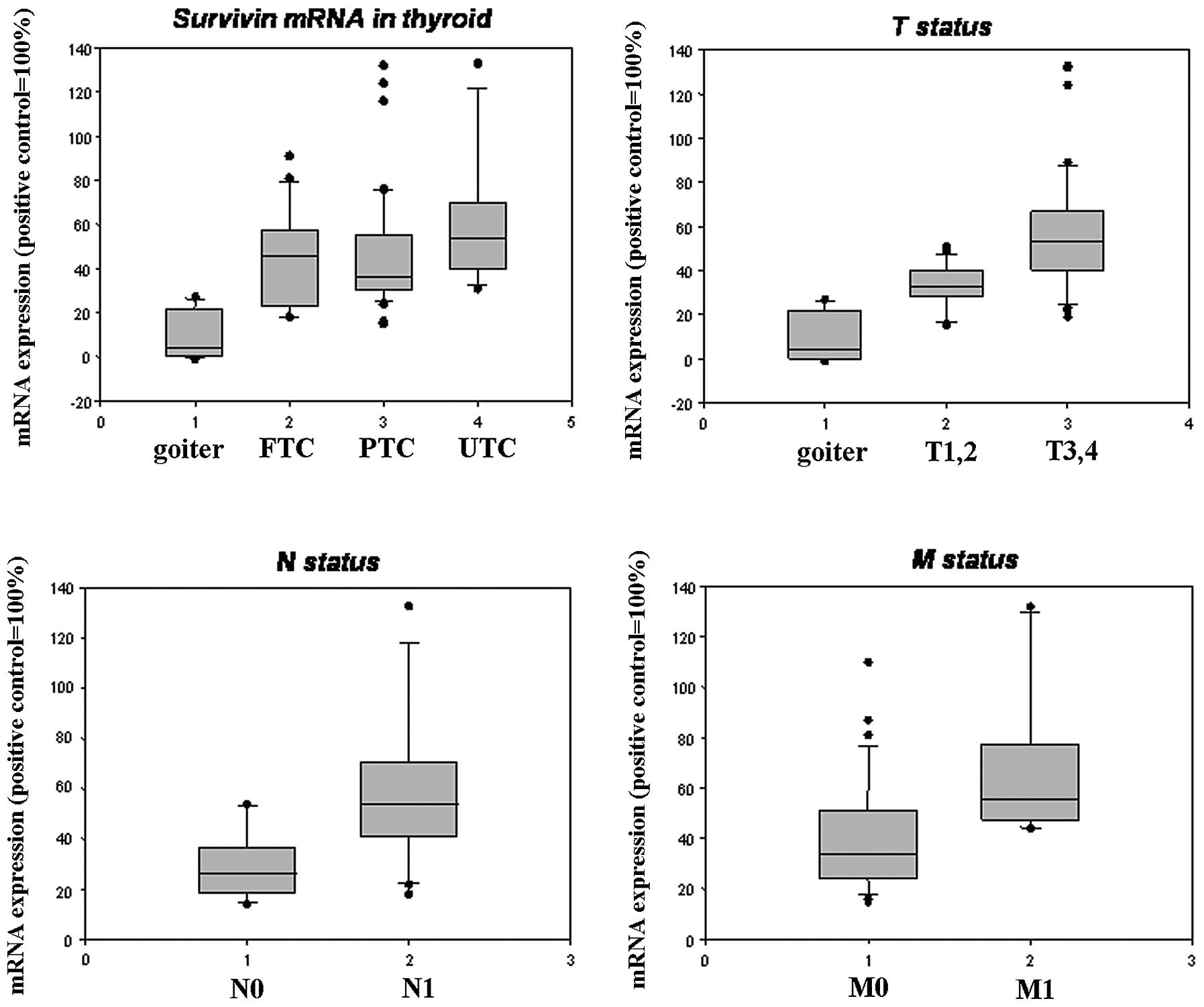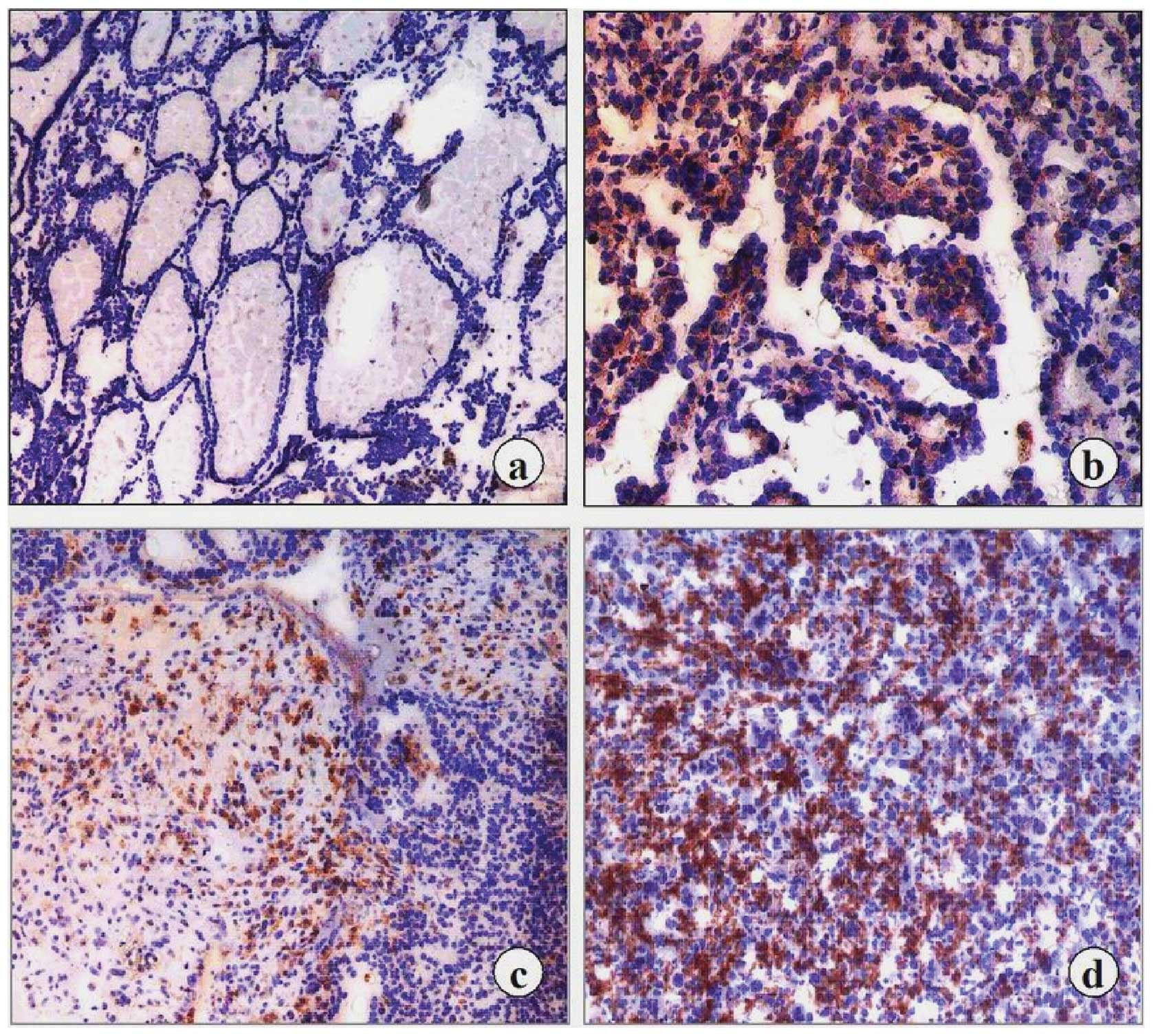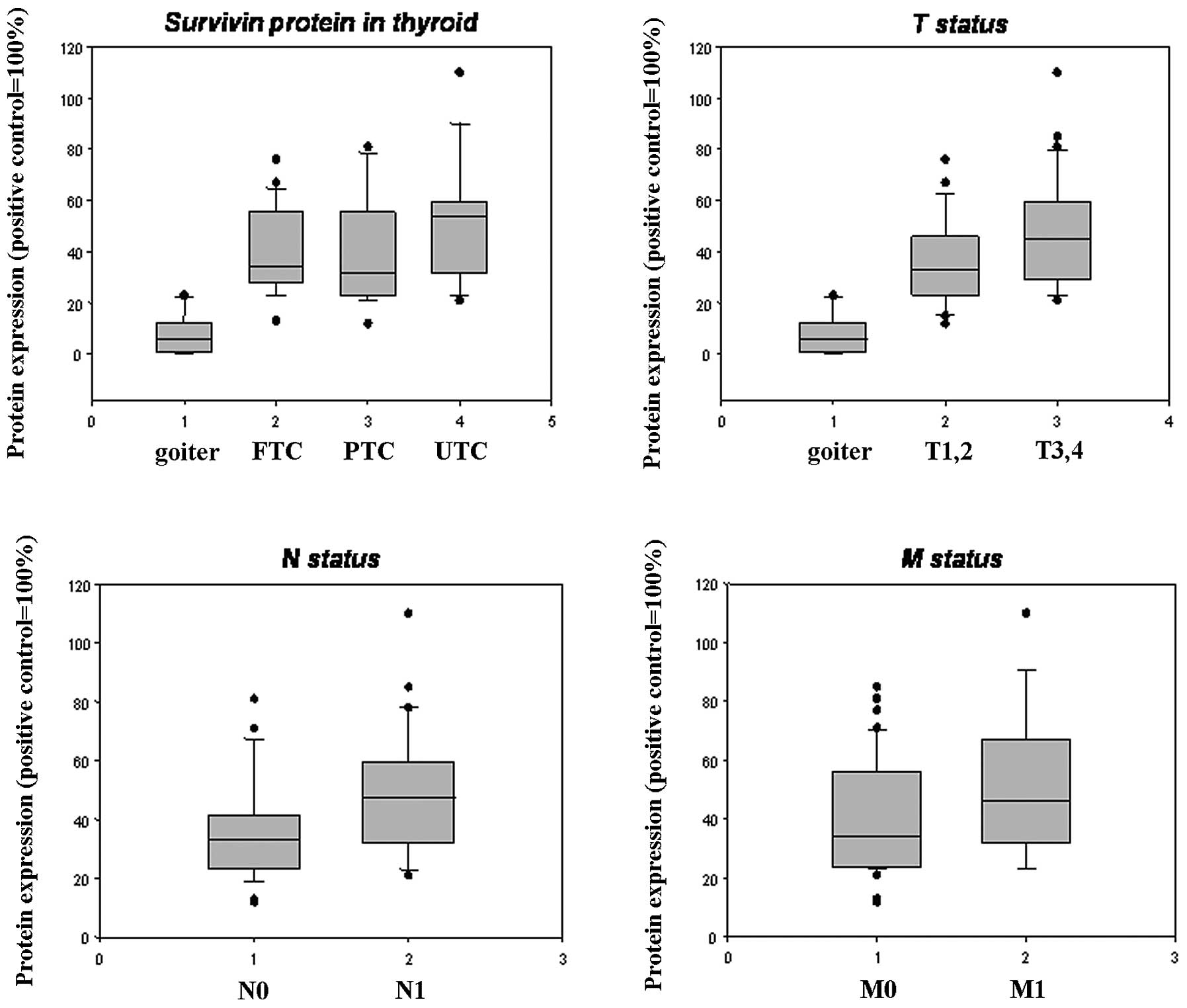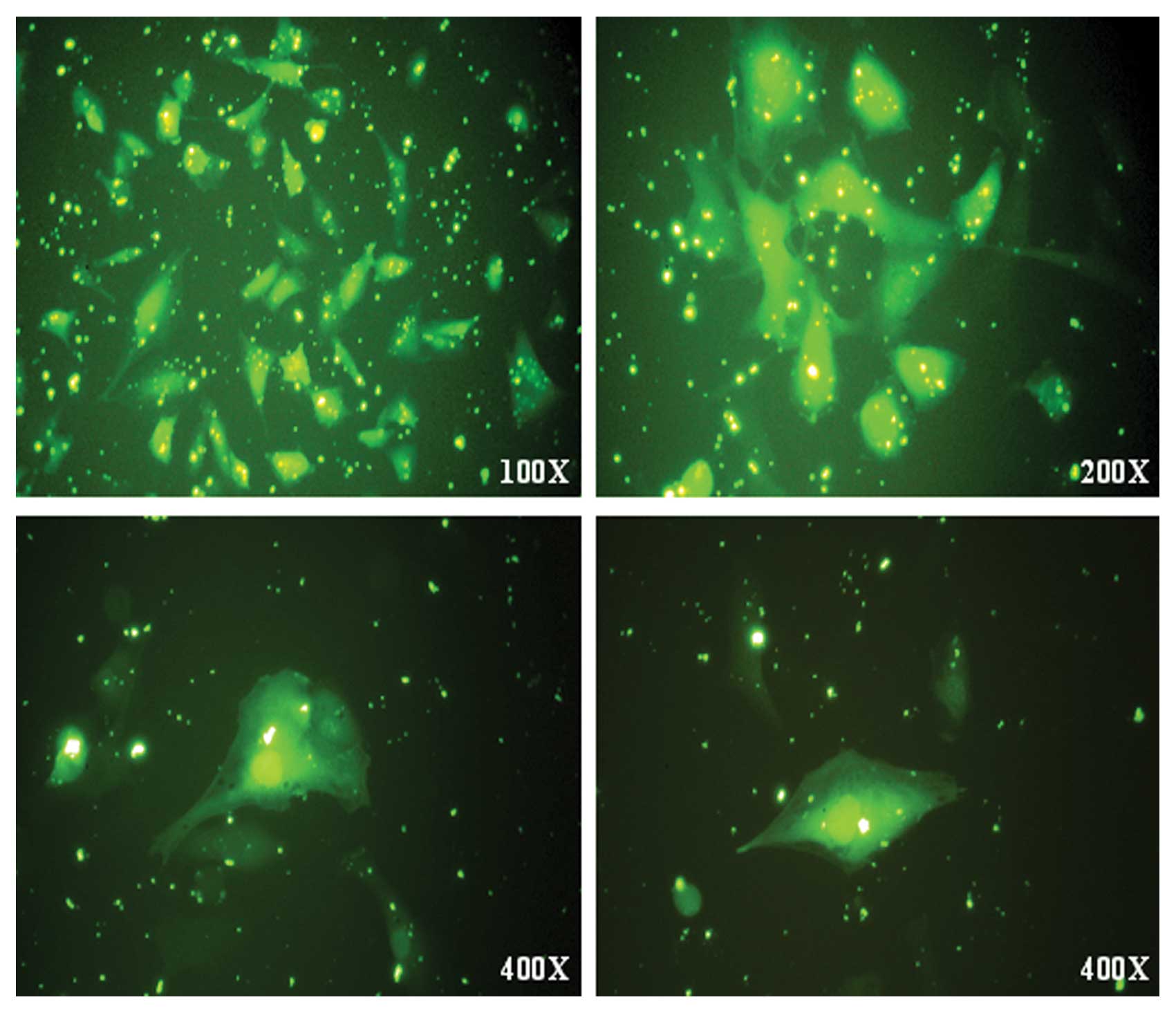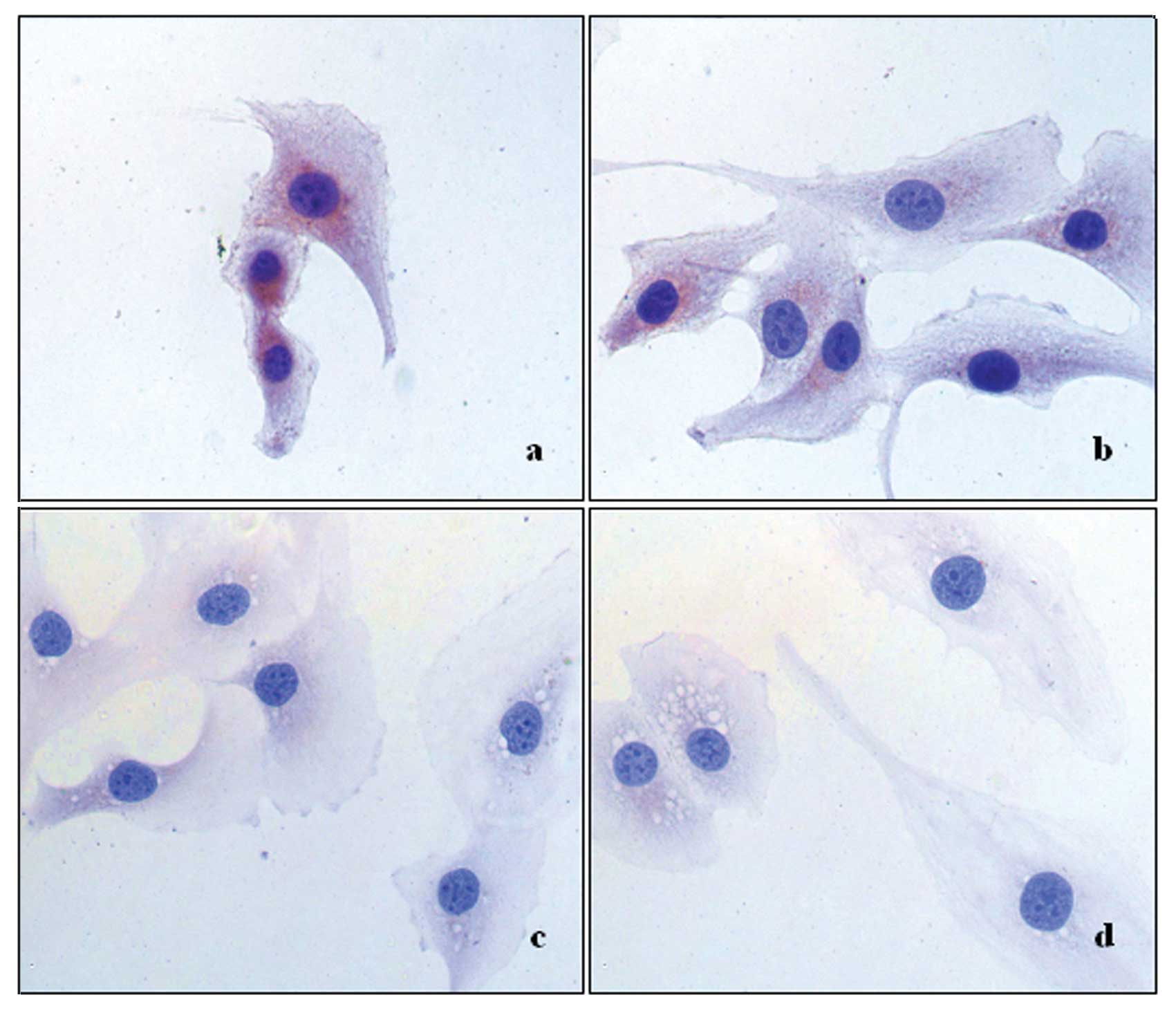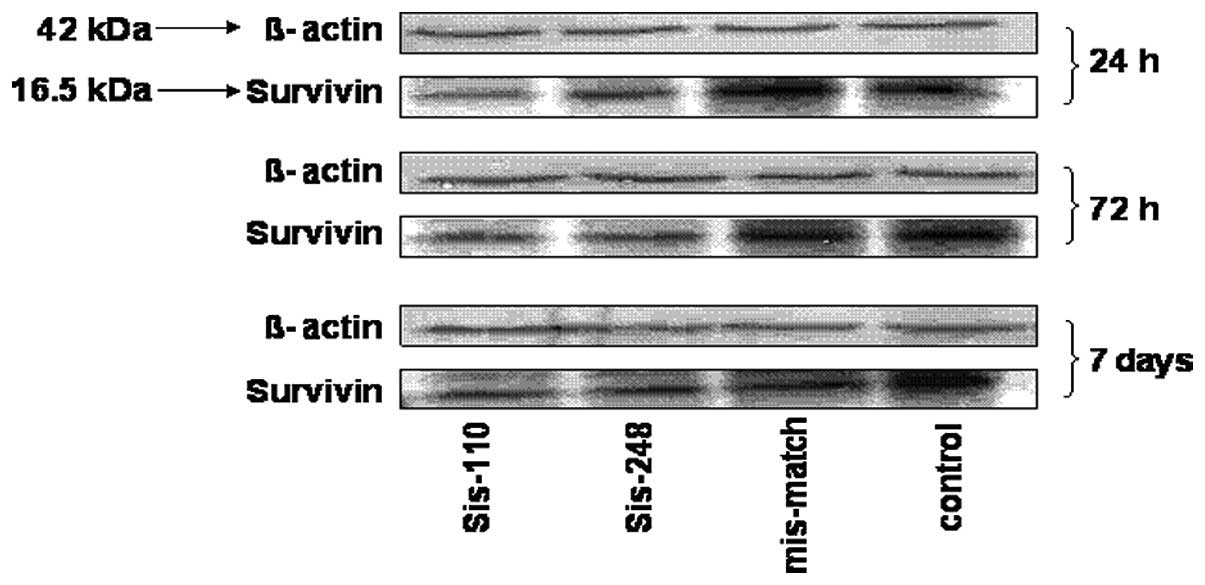Targeting of the anti-apoptotic gene survivin in human thyroid carcinoma
- Authors:
- Published online on: June 28, 2012 https://doi.org/10.3892/ijmm.2012.1046
- Pages: 465-472
-
Copyright: © Chen et al. This is an open access article distributed under the terms of Creative Commons Attribution License [CC BY_NC 3.0].
Metrics: Total
Views: 0 (Spandidos Publications: | PMC Statistics: )
Total PDF Downloads: 0 (Spandidos Publications: | PMC Statistics: )
Abstract
Survivin is a novel apoptosis inhibitor. Its gene is related to the baculovirus gene, which is believed to play a crucial role in fetal development and in cancer. We attempted to determine the expression of survivin in both thyroid goiter and carcinoma tissues, and to evaluate its prognostic value in human thyroid disease. In the present study, we applied small interfering RNA (siRNA) directed against survivin to determine the effects of decreasing the high constitutive levels of this protein in the FTC-133 thyroid follicular cancer cell line. Using reverse transcription PCR and immunohistochemistry, we compared the expression of survivin with relevant clinical and pathological data of 90 postsurgical specimens from patients with primary thyroid carcinoma and patients with benign goiter (33 with papillary thyroid cancer, 24 with follicular thyroid cancer, 18 with undifferentiated thyroid cancer and 15 cases with goiter). For the siRNA treatment in a human follicular thyroid carcinoma cell line, fluorescein-labeled double-stranded ultrapure siRNAs were used. RT-PCR identified the survivin transcript in 67/75 (89.3%) tumor samples and in 4/15 benign goiter samples. Immunohistochemical analysis showed positive immunoreactivity in 65/75 (86.7%) carcinomas while no expression was noted in all of the 15 benign goiter tissues. Survivin mRNA and protein levels were significantly higher in cancer tissues compared to benign goiter tissues (P<0.001). Higher survivin expression was found in the tumor tissues of pT3/pT4 and in the tumors with lymph node metastasis (P<0.05). Tumors with distant metastasis demonstrated higher survivin expression compared to the tumors without distant metastasis. Additionally, the expression of survivin in undifferentiated carcinomas was higher than that in differentiated ones. There was no significant correlation between survivin expression and age, gender, histological subtype and pathological stage. Our additional studies demonstrated that siRNA directed against survivin markedly decreased the protein expression of survivin. In conclusion, we conclude that survivin expression indicates more aggressive behavior and metastatic ability in thyroid cancer cells in vivo. Survivin can be used as a diagnostic and therapeutic marker for thyroid carcinoma and an important target in the strategy of thyroid cancer therapy. Our results of siRNA silencing indicate that siRNA may have potential as a therapeutic modality in the treatment of human thyroid cancer.




